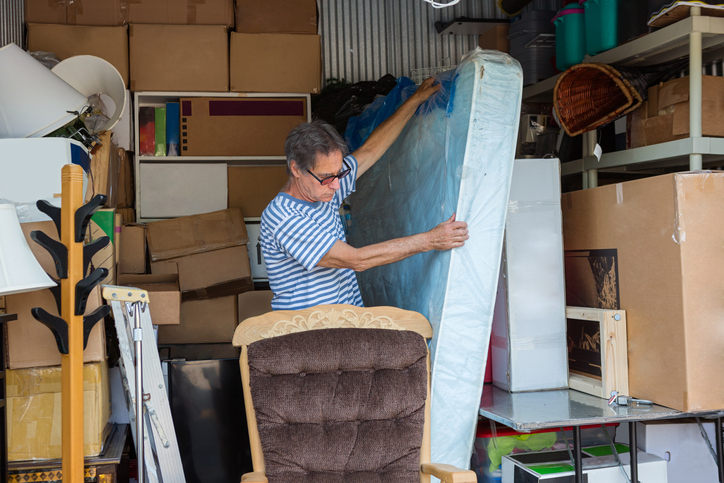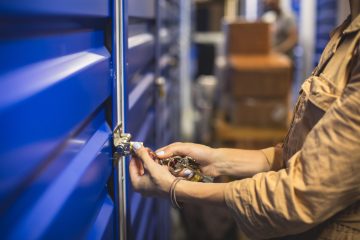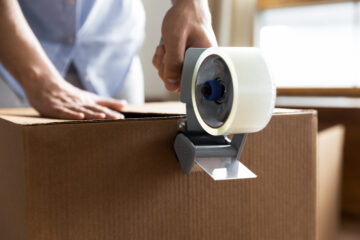The Do’s and Don’ts of How To Safely Store Items in a Storage Facility

We know that in December, you don’t want to think about taking down the decorations you just put up, but the time will come when you must take them down–and then what? Some people have ample storage in their homes for seasonal items, but what if you don’t? Storage units are an excellent way to store household items when you don’t have room for them, such as during a move, construction, after a holiday, or if you are saving items (such as furniture or clothing) for when a child gets older. In case you were wondering whether you can safely store items in a storage facility, here is a list of some storage do’s and don’ts.
DO
1. Store Items in a Climate-Controlled Facility
When you leave your items in storage, they can become susceptible to warping, rotting, and deterioration over time. In a climate-controlled setting, the environment of your storage unit is kept at the right temperature to prevent mold growth, warping, and other damaging conditions. Not every storage facility is climate-controlled, so make sure you do your research before choosing a facility. The storage facility at Big John’s Moving, known as Little John’s Storage, is just one example of a climate-controlled facility that prioritizes the safety of your items.
2. Pack Items Securely For Storage
To truly safely store items in a storage facility, you need to make sure they are packed well. Even in a climate-controlled facility, dust can build up over time, potentially preventing your items from remaining in pristine condition. Wrapping your items such as furniture, musical instruments, and other valuables, in tarp can protect the wood, metal, and other material from dust buildup. Clothing, books, and other soft items should be stored in airtight containers.
3. Store Items Off the Floor to Increase Airflow
Airflow is important in a storage facility in order to prevent dingy smells and mustiness from developing. An effective way to increase airflow is to store your items off the floor. Wooden pallets are excellent for this. They are inexpensive, easily available, and strong enough to withstand the weight of most furniture and other heavy items. Keeping items away from the walls of your unit by even just a few inches is another great way to make sure air continues to flow around them.
4. Label All Your Boxes
You may remember now that the large lumpy item wrapped in tarp is your grandmother’s old armchair while the rectangular container is books and the square box is your daughter’s baby clothing, but you may not remember all of that (and more) a year from now. Considering your items will be kept in storage for a while, you want to make sure everything is clearly labeled so that you can easily find what you are looking for the next time you need it. The last thing you want to do is to start opening everything to see what it all is.
5. Purchase Insurance
Though storage facilities go to great lengths to keep your items safe, insurance adds that extra layer of protection in the very tiny chance something does happen. You are keeping these items in storage instead of donating or selling them for a reason–you want to keep them around. So, in addition to following all the above steps in order to safely store items in a storage facility, it’s never a bad idea to also have insurance on items that have value to you.
DON’T
1. Don’t Store Perishables
While certain canned or non-perishable food may be allowed in your storage unit, perishable food is most definitely not. Aside from going rancid over time, creating smells and growing mold, food can attract pests that can damage your other items. Perishable food is a big no-no in storage facilities.
2. Don’t Store Anything Flammable or Combustible
It goes without saying that dangerous items like propane tanks, lighter fluid, fireworks, and gasoline cannot be safely stored in storage facilities and are not permitted. There are other flammable or combustible items you may not realize are a problem, such as leftover paint from a home improvement project, fertilizer, cooking spray, and car batteries. These items can be a danger not just to your storage unit but to the entire facility.
3. Don’t Store Tires (Most of the Time)
Many storage facilities don’t allow tires because it becomes a problem to dispose of them should their owner decide never to come collect them. Tire fires are also extremely difficult to deal with. Some storage facilities do allow you to store up to four tires–as in, just the amount you need for your car should you, say, switch to snow tires in the winter and need somewhere to store your regular tires for a few months.
4. Don’t Store Plants
Plants are living things. They require sunlight, water, and fresh air. They will not survive in a storage facility and they attract unwanted pests.
5. Don’t Store Pets!
It’s crazy that this needs to be said, but do not store your pet in your storage unit. Not only is it inhumane, but it’s also against the law. Pets belong in your home or, if you are going away and can’t bring them along, then at a neighbor, family member, or at a pet boarding center.
Little John’s Storage at Big John’s Moving makes the safety and security of your items a priority. We have armed guards, 24-hour video security, and trained guard dogs to make sure no one gets near your belongings without permission. We personally escort clients to and from their storage units as an added measure of security. Our units are climate-controlled, well-lit, and clean for optimal storage conditions. And, of course, we will help you with packing and moving your items!


